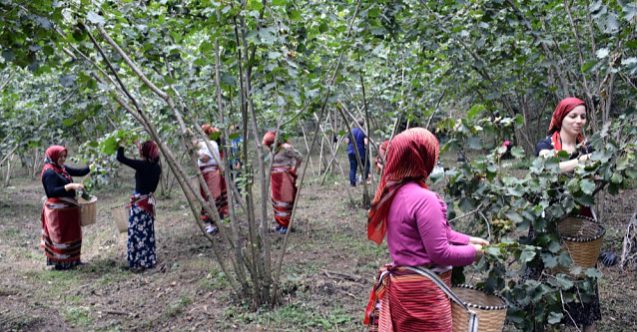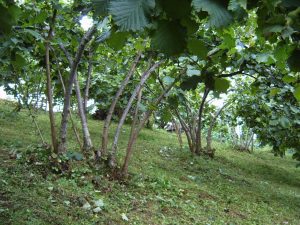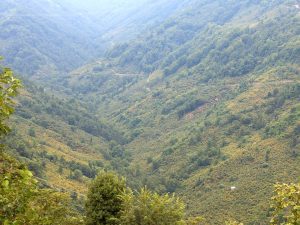
Turkish hazelnut production, while rudimentary in some respects, continues to dominate the world supply. And according to a speaker at the 2022 International Congress of Hazelnut held in Corvallis, Ore. on Sept. 5 to 9, increases in planted acres as well as advances in production and harvest practices should result in even more production in the years ahead.
The Congress, part of the International Society of Horticultural Science, drew approximately 130 people from 20 countries, according to Oregon State University Professor Shawn Mehlenbacher, the conference chair. This marked the second time the conference has been held in the U.S. and the first since 2000. It typically is held every four years.
Day four of the conference featured a look at several of the top hazelnut-producing countries, including Turkey, which has long dominated the world supply and has an oversized effect on global hazelnut prices. In 2020, Turkey produced 62% of the global production of slightly more than 1 million tons. Italy, the second-highest producer, accounted for 13.1% of the world production in 2020. The U.S., with 6%, was third, followed by Azerbaijan and Georgia, each with 4.6% of the world’s supply. Chile, China and Iran made up the next three biggest hazelnut suppliers that year.
The vast majority of Turkey’s crop is exported, with Germany and Italy making up the top destinations. Germany consumed just under a quarter of Turkey’s kernel exports in 2021, while Italy consumed 22.2%. Turkish hazelnut exports to China have been increasing, rising to 3.2% of the country’s exports in 2021. The overall value of Turkish hazelnut exports was $2.2 billion in 2021.
During his presentation, Ankara University’s Veli Erdogan, who addressed participants via Zoom, said Turkey is expected to produce 765,000 tons this year, up 10% over last year and up 15% over the five-year average of 663,000 tons. Part of the increase is a result of increased area planted to hazelnuts, as hectares in hazelnuts in Turkey increased from 706,000 in 2017 to 738,000 last year.
With current acreage, Turkey’s yield potential is over a million tons, but issues with late spring frosts, summer droughts, some orchard care neglect and the age of some orchards consistently reduce the country’s annual output to around 700,000 tons, Erdogan said.
Production Regions
The country’s newer production regions, the Western and Central regions, are generating far superior yields than the Eastern or older production region, Erdogan said. In the Eastern production region, for example, yields averaged 727 kilograms per hectare between 2017 and 2021, while yields in the Central region averaged 970 kilograms per hectare during that five-year stretch and yields in the Western region average 1,218 kilograms per hectare.
“The productivity increases from east to west,” he said.
But about 60% of the country’s supply is generated out of the older region, where orchards are typically more than 50 years old, with some over 100 years old, and are often planted to shallow soils on steep slopes at relatively high elevations. Most of the production occurs below 500 meters of elevation, Erdogan said, but there are plantations in operation up to 1,000 meters in elevation. Production in the old region extends about 30 kilometers inland from the Black Sea. Production in the newer regions extend inland as much as 60 kilometers, and most of it occurs at lower elevation.
Hazelnut trees in the newer production regions also are younger and planted on deep, fertile soils of flat or gently sloped terrain, Erdogan said. “Most of the [Central and Western production region] orchards are young, but they are now getting to an age of 40 to 50 years old,” Erdogan said.
Turkish hazelnut production is concentrated in small orchards, which average about 1.4 hectares in the old region and about 1.9 hectares in the Central and Western regions. The trees are planted in circular patterns of four to six individual trees in a multirooted planting system called Ocak.
Most of the nuts are harvested by hand by bending branches and removing clusters while still on trees, while some growers wait until nuts fall and then collect them by hand from the ground. In some cases, in the Western Region, simple harvest machines, such as vacuum harvesters, are used. Clusters are dried in the sun. Husks are then machine removed and nuts dried again in the sun.

Some Concerns
Issues with frost can significantly lower yields in any given year, especially in the Eastern region, Erdogan said, and efforts are underway to breed late-leafing cultivars that will be more frost-tolerant. Other significant hazelnut production issues in Turkey include bacterial blight, nectria canker, honey fungus and white root rot. Powdery mildew pressure has been decreasing lately, Erdogan said.
The citrus longhorn beetle, first detected in a nursery in 2014 before being moved to the Eastern Black Sea Region by ornamental plants, is a new pest of concern. In 2021, more than 400 hectares were affected by the pest, and eradication studies were performed by dismantling and burning the infested plants, he said.
“This year, the current estimate of dispersal is about 800 hectares,” Erdogan said.
Excess rainfall, which in 2017 caused landslides during harvest and resulted in hazelnuts being washed into the Black Sea by flood waters, also can be a significant factor in Turkish hazelnut production.
A significant development in the past decade, according to Erdogan, is the establishment of demonstration orchards, where researchers are looking at new planting systems, including a single-trunk tree that they say is doubling production.
“So, people are happy, growers are happy, and the Ministry of Agriculture is trying to convince the growers to renew their orchard,” Erdogan said.
The industry also this year released a cultivar that is producing a larger nut and significantly higher yields than existing varieties. The cultivar is early leafing and maturing and has no tendency toward alternate bearing, he said. It is being promoted for the coastal zone production.

The industry also has been looking at hazelnut drying machines, Erdogan said, but high energy costs associated with the machines could make the technology obsolete.
And growers in recent years have begun looking at harvesting nuts on nets where they place nets on the orchard floor and then gather nuts in the nets. The system is reducing labor needs by up to half, Erdogan said, and has sanitary benefits in preventing nuts from contacting the soil.
Poised for the Future
There is some question as to whether Turkish hazelnut production will continue to grow at the rate it experienced over the last decade. At least in terms of production area, the rate of increase slowed between 2019 and 2021, increasing just 4,000 hectares in that stretch after increasing 28,000 hectares in the three years prior. But as Turkish growers adopt more innovative production practices and utilize the higher-yielding varieties coming out of their breeding programs, it appears Turkey is poised to continue to dominate the world’s supply for years to come.










